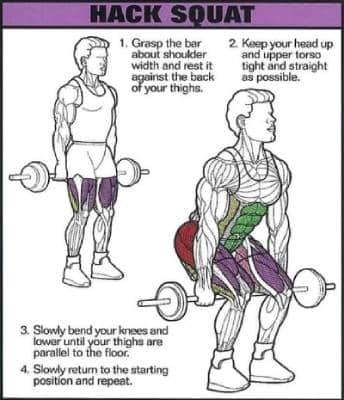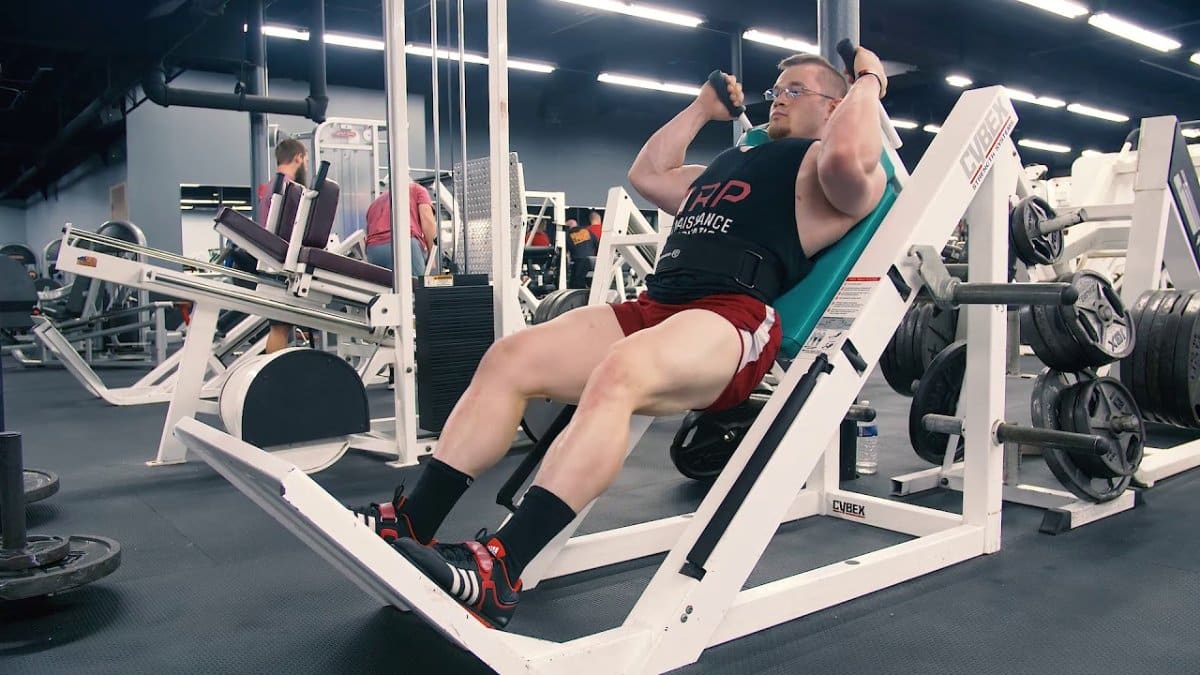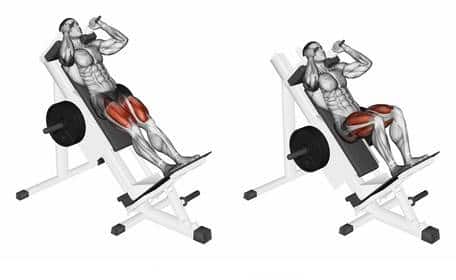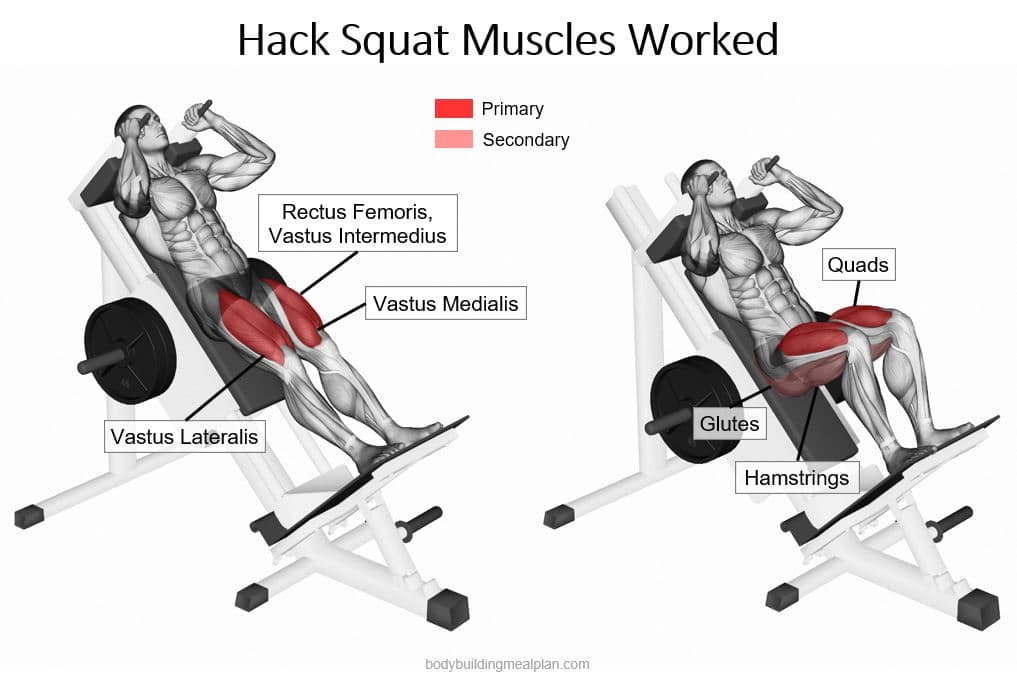Have you ever experienced shoulder pain while doing hack squat exercises? It can be quite frustrating when the workout you enjoy ends up causing discomfort. But don’t worry, in this article we will delve into the causes behind shoulder pain in hack squat exercises and help you understand why it happens.
When it comes to hack squat exercises, shoulder pain can be a common complaint. The position and movement involved in this exercise can put strain on the shoulder joint and muscles, leading to discomfort. One of the primary culprits is improper form and technique.
If you’re not using the correct form while performing hack squats, you may be putting unnecessary stress on your shoulders. Additionally, lack of flexibility and mobility in the shoulder joint can also contribute to pain.
Inadequate warming up before the exercise and not properly stretching the shoulder muscles can make them more prone to injury. But don’t worry, in the next paragraphs, we will explore these causes in more detail and provide you with tips and techniques to prevent and alleviate shoulder pain during hack squat exercises.
So, stay tuned and let’s get to the bottom of this shoulder issue together!

Introduction
Hack squat exercises and shoulder pain
If you’ve ever experienced shoulder pain while performing hack squat exercises, you’re not alone. Many individuals encounter discomfort or even injuries in their shoulders during these workouts. Understanding the causes behind shoulder pain in hack squat exercises is crucial for injury prevention and overall well-being.
Why understanding the causes is important
By understanding the causes of shoulder pain in hack squat exercises, you can take proactive measures to prevent injuries, modify your approach, and protect your shoulders. This knowledge will allow you to continue enjoying the benefits of hack squat exercises while minimizing the risk of shoulder pain.
Anatomy of the shoulder
Components of the shoulder joint
To understand the causes of shoulder pain in hack squat exercises, it’s essential to have a basic understanding of the anatomy of the shoulder. The shoulder joint is a complex joint that consists of several components, including the humerus (upper arm bone), scapula (shoulder blade), and clavicle (collarbone). These bones, along with the associated muscles, ligaments, tendons, and cartilage, work together to provide stability and mobility to the shoulder.
Function of each shoulder component
The humerus, scapula, and clavicle form the shoulder joint, allowing various movements such as flexion, extension, abduction, adduction, and rotation. The muscles and tendons surrounding the joint facilitate these movements, while ligaments provide stability. Any imbalances or issues with these components can potentially lead to shoulder pain during hack squat exercises.
Role of muscles and tendons in shoulder movement
The muscles and tendons in the shoulder play a significant role in facilitating proper movement and stability. The rotator cuff muscles, including the supraspinatus, infraspinatus, teres minor, and subscapularis, help stabilize and rotate the shoulder during exercises like hack squats. Additionally, the deltoids, trapezius, and pectoralis muscles are also involved in shoulder movement and stability.

Hack squat exercise
Overview of hack squat exercise
The hack squat is a compound exercise that primarily targets the lower body, specifically the quadriceps, hamstrings, and glutes. It involves using a hack squat machine or a barbell while positioning yourself with your back against a pad and your feet shoulder-width apart. From this starting position, you bend your knees to lower your body into a squatting position and then extend your legs to return to the starting position.
Muscle groups targeted
While the hack squat primarily focuses on the lower body muscles, such as the quadriceps, hamstrings, and glutes, it also engages other muscles to provide stability and support during the exercise. The core muscles, including the abdominal muscles and lower back muscles, also contribute to maintaining proper form and balance.
Proper form and technique
Maintaining proper form and technique is essential to prevent shoulder pain during hack squat exercises. It is crucial to position your body correctly on the machine or barbell, ensuring that your back is fully supported and your feet are firmly planted. Throughout the movement, remember to keep your chest up, shoulders back, and knees aligned with your toes. Proper breathing and smooth, controlled movements are also key to performing hack squats correctly.
Common causes of shoulder pain in hack squat exercises
Incorrect form and technique
One of the leading causes of shoulder pain in hack squat exercises is incorrect form and technique. If you’re not maintaining proper posture, such as rounding your shoulders or arching your back, you put unnecessary stress on the shoulder joint. This can lead to discomfort, strain, or even acute injuries.
Overloading or excessive weight
Another common cause of shoulder pain in hack squat exercises is overloading or using excessive weight. When you attempt to lift more weight than your shoulder muscles can handle, it puts excessive strain on the joint. This can lead to shoulder pain and potential injuries, such as muscle tears or tendon inflammation.
Lack of warm-up and stretching
Skipping warm-up exercises and not properly stretching before engaging in hack squats can contribute to shoulder pain. Without adequately preparing your muscles and joints for the exercise, you increase the risk of straining or overloading your shoulders. Warm-up exercises and stretching help increase blood flow, loosen up the muscles, and improve flexibility, reducing the chances of injury.
Muscle imbalances
Muscle imbalances, such as weak or tight muscles in the shoulder and surrounding areas, can also contribute to shoulder pain during hack squat exercises. When certain muscles are overactive or underdeveloped, it affects the overall stability and movement of the shoulder joint, leading to pain or discomfort.
Limited shoulder mobility
If you have limited shoulder mobility, it can make hack squat exercises more challenging and increase the risk of shoulder pain. Conditions such as frozen shoulder or prior shoulder injuries can restrict the range of motion in the joint, making it harder to perform exercises correctly. Limited mobility can also result from poor posture or sedentary lifestyles.

Effects of shoulder pain during hack squat exercises
Immediate discomfort and difficulty in performing the exercise
When shoulder pain occurs during hack squat exercises, it can cause immediate discomfort and difficulty in performing the exercise properly. This can disrupt your workout routine, prevent you from reaching your fitness goals, and potentially discourage you from continuing with the exercise altogether.
Potential injuries and long-term consequences
Ignoring shoulder pain during hack squat exercises can lead to more severe injuries and long-term consequences. Over time, repetitive strain on the shoulder joint can result in chronic pain, inflammation, and even structural damage. It’s essential to address shoulder pain promptly to avoid further complications and maintain your overall well-being.
Preventing shoulder pain in hack squat exercises
Proper warm-up and stretching
To prevent shoulder pain in hack squat exercises, always begin with a proper warm-up routine and stretches that target the shoulder muscles and surrounding areas. This helps prepare the muscles and joints for the exercise, reduces the risk of strains or other injuries, and improves overall performance.
Gradual progression of weight and intensity
When performing hack squats, it’s crucial to gradually increase the weight and intensity over time. This allows your shoulder muscles to adapt and strengthen gradually, reducing the risk of overloading and pain. Start with lighter weights and slowly increase as your strength and form improve.
Maintaining correct form and technique
Maintaining proper form and technique is vital for preventing shoulder pain during hack squat exercises. Focus on keeping your back against the pad, chest up, and shoulders back throughout the movement. Avoid rounding your shoulders, arching your back, or putting excessive strain on the joint.
Balance training and muscle strengthening
Incorporating balance training and muscle strengthening exercises into your routine can help prevent shoulder pain during hack squat exercises. A strong and stable core, along with proper muscle balance in the shoulder and surrounding areas, improves overall joint stability and reduces the risk of pain or injury.
Improving shoulder mobility
If you have limited shoulder mobility, it’s essential to work on improving it. Regular stretching exercises that target the shoulder joint and surrounding muscles can help increase flexibility and range of motion. By doing so, you reduce the chances of straining or injuring your shoulders during hack squat exercises.

Rehabilitation and recovery from shoulder pain
Identifying and addressing the cause of shoulder pain
When experiencing shoulder pain during hack squat exercises, it’s essential to identify and address the underlying cause. If the pain persists or worsens, it’s advisable to seek professional medical advice to diagnose any potential injuries or imbalances.
Rest, ice, compression, and elevation (RICE)
For acute shoulder pain or inflammation, following the RICE protocol can aid in recovery. Rest the affected shoulder, apply ice to reduce swelling, compress the area with a suitable wrap or bandage, and elevate the arm to minimize fluid accumulation. This approach can help alleviate pain and promote healing.
Physical therapy exercises for shoulder recovery
Physical therapy exercises prescribed by a healthcare professional or physical therapist can assist in rehabilitating the shoulder and preventing future pain. These exercises aim to strengthen the muscles, improve flexibility, and restore proper movement patterns in the shoulder joint.
Strengthening exercises for shoulder stability
Incorporating specific strengthening exercises for the shoulder muscles can help improve stability and prevent future shoulder pain. These exercises often target the rotator cuff muscles, deltoids, and other muscles involved in shoulder movement. It’s crucial to perform these exercises correctly and under the guidance of a professional to avoid further injury.
Gradual return to hack squat exercises
Once the shoulder pain has subsided, it’s essential to plan a gradual return to hack squat exercises. Start with lighter weights and focus on maintaining proper form and technique. As your shoulder strength and mobility improve, gradually increase the weight and intensity to avoid re-aggravating the muscles or joints.
Seeking professional guidance
Consultation with a healthcare professional
If you’re experiencing persistent shoulder pain during hack squat exercises, it’s advisable to consult a healthcare professional, such as a sports medicine physician or an orthopedic specialist. They can evaluate your condition, identify any underlying issues, and provide guidance on the appropriate course of treatment.
Working with a fitness trainer or physical therapist
Working with a certified fitness trainer or a physical therapist who specializes in sports injuries can be beneficial in preventing and addressing shoulder pain during hack squat exercises. They can assess your form, design a customized exercise program, and provide guidance on proper technique, gradually increasing weight, and improving shoulder mobility.
Customized exercise programs and modifications
A fitness trainer or physical therapist can develop customized exercise programs that address your specific needs and goals while taking into account any previous injuries or limitations. They can also suggest modifications to hack squat exercises or alternative exercises that put less strain on the shoulders, ensuring you can continue training while minimizing the risk of pain or injury.

Importance of listening to your body
Recognizing and respecting pain or discomfort signals
Listening to your body and recognizing pain or discomfort signals is crucial for preventing injuries and promoting overall well-being. If you experience shoulder pain during hack squat exercises, it’s essential to acknowledge it and take the necessary steps to alleviate the pain and prevent further damage.
Modifying or avoiding exercises when necessary
If you’re experiencing persistent shoulder pain or if the pain worsens during hack squat exercises, it may be necessary to modify or avoid these exercises temporarily. This will give your shoulders the time they need to recover and heal. Always listen to your body and seek guidance from professionals to determine the best course of action.
Conclusion
Understanding the causes behind shoulder pain in hack squat exercises is crucial for injury prevention and overall well-being. By following proper techniques, warming up, and gradually progressing, individuals can enjoy the benefits of hack squat exercises while minimizing the risk of shoulder pain. Remember to listen to your body, seek professional guidance when needed, and prioritize your shoulder health to stay on track with your fitness journey.




